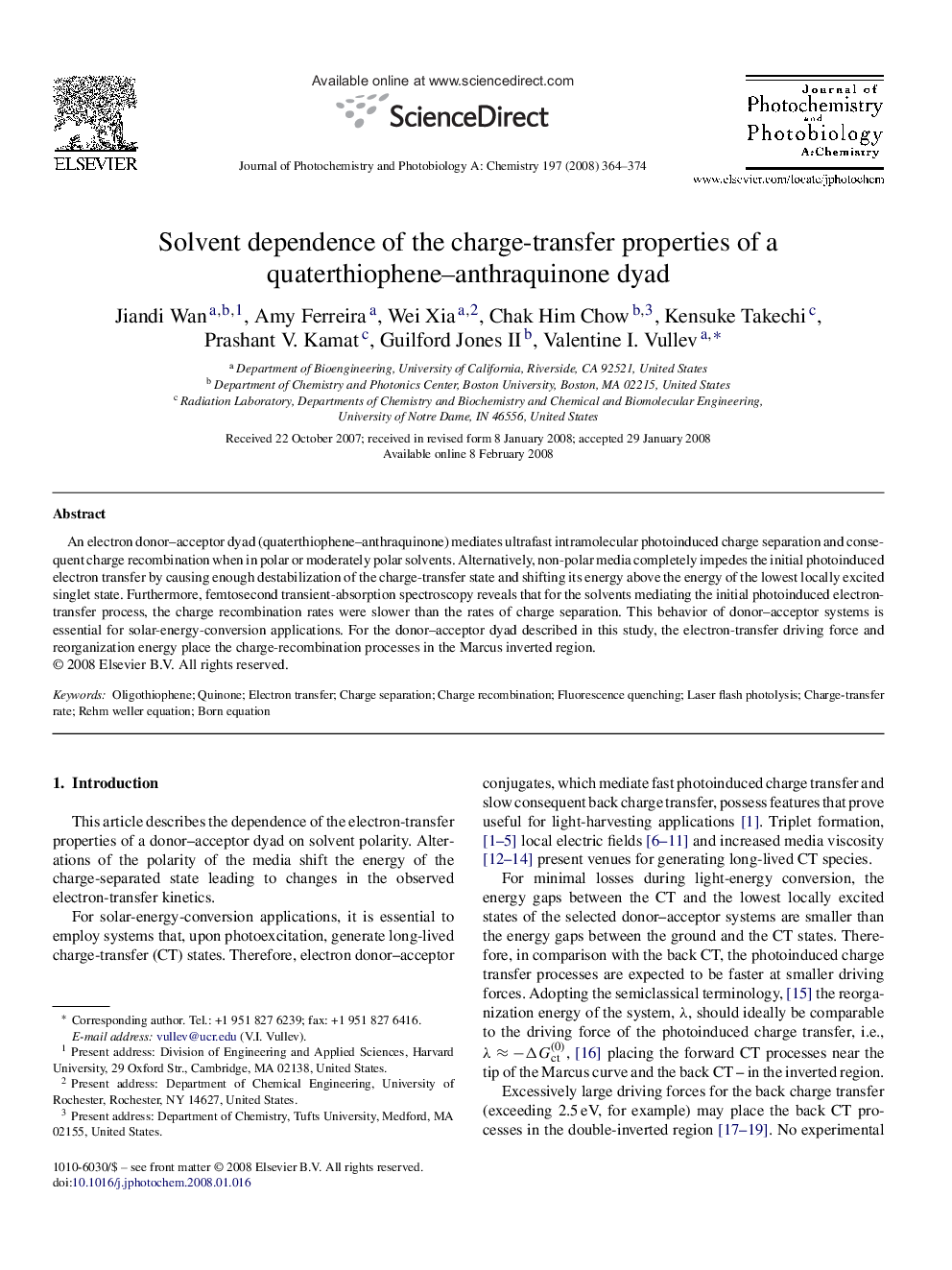| Article ID | Journal | Published Year | Pages | File Type |
|---|---|---|---|---|
| 28033 | Journal of Photochemistry and Photobiology A: Chemistry | 2008 | 11 Pages |
An electron donor–acceptor dyad (quaterthiophene–anthraquinone) mediates ultrafast intramolecular photoinduced charge separation and consequent charge recombination when in polar or moderately polar solvents. Alternatively, non-polar media completely impedes the initial photoinduced electron transfer by causing enough destabilization of the charge-transfer state and shifting its energy above the energy of the lowest locally excited singlet state. Furthermore, femtosecond transient-absorption spectroscopy reveals that for the solvents mediating the initial photoinduced electron-transfer process, the charge recombination rates were slower than the rates of charge separation. This behavior of donor–acceptor systems is essential for solar-energy-conversion applications. For the donor–acceptor dyad described in this study, the electron-transfer driving force and reorganization energy place the charge-recombination processes in the Marcus inverted region.
